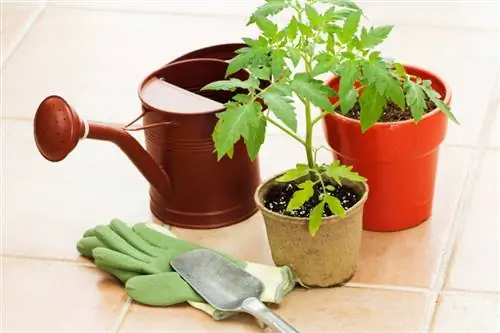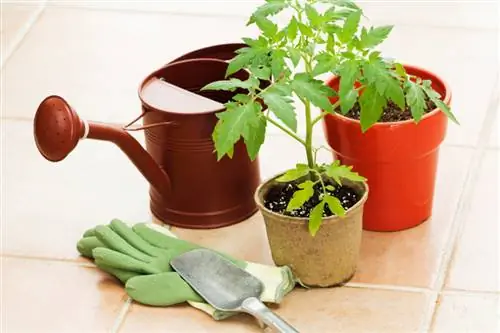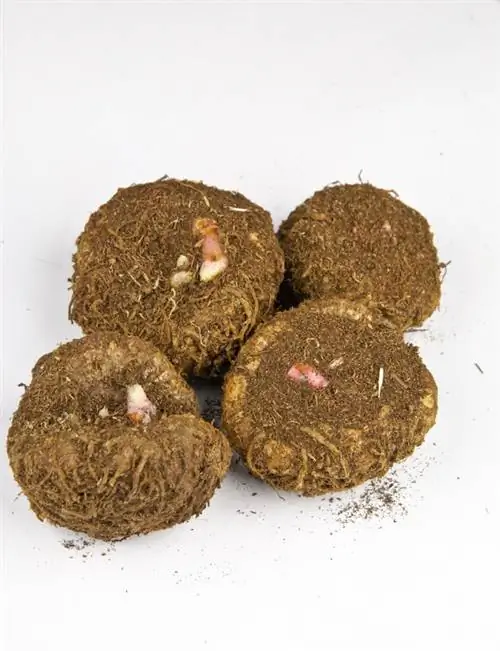- Author admin [email protected].
- Public 2023-12-16 16:46.
- Last modified 2025-01-23 11:19.
Experienced hobby gardeners are not irritated by the poor selection of seeds and fresh produce in stores. You can easily propagate old, new and rare tomato varieties yourself. This is how you can do it with seeds and cuttings.

How can you propagate tomatoes yourself?
Tomatoes can be propagated by sowing home-grown seeds or by propagating cuttings. When sowing, ripe seeds are removed, dried and sown in sowing soil. Cuttings are created from strong shoots that are planted in vegetable soil.
Get and sow your own seeds
The fully ripe fruits of seed-resistant tomato varieties contain a we alth of suitable seeds for sowing. Immediately after harvest, the tomato seeds are subjected to natural fermentation to preserve their ability to germinate. To do this, spoon the seeds and the pulp into a container and pour water over the mixture. Covered with cling film, the gelatinous shell comes off and releases the seeds.
After the tomato seeds have dried, they are stored in a container or paper bags in a cool, dark place.
Sowing starts in mid-February
Since growing behind glass makes sense in our climate, the self-harvested tomato seeds are used from mid-February. This is how you proceed with sowing:
- let the seeds soak in warm chamomile tea for 6 hours
- Fill the seed tray or pot two-thirds full with peat sand (€6.00 on Amazon), seed soil or coconut fiber
- Put the seeds 0.5 centimeters deep into the substrate at a distance of 3 centimeters and moisten them
At a constant temperature of 18 to 24 degrees in a partially shaded window seat, germination takes an average of 10 to 14 days. The seedlings are pricked out when the second or third pair of true leaves have developed.
Propagate tomatoes with cuttings
Many hobby gardeners' hearts bleed when they dispose of the he althy shoots in the compost. Simply use the plant material to propagate cuttings. This is how it works:
- sort out the strongest shoots after thinning out
- fill small pots with airy, loose vegetable soil
- Plant two-thirds of each cutting in it
- place in the greenhouse or in a partially shaded, protected place in the garden
At temperatures of 20 to 25 degrees Celsius, the converted stingers are kept constantly moist. After a week, roots have already formed. Now the young tomato plants are allowed into the sun and are cared for like adult specimens.
Information about wild tomatoes has been compiled for you in this article.
Tips & Tricks
Tomato seeds soaked in diluted garlic juice prove to be significantly more resistant to mold infestation when sowing. If the smell bothers you too much, add a pinch of fine rock dust or charcoal ash.






